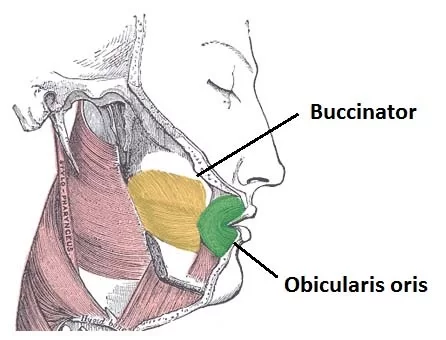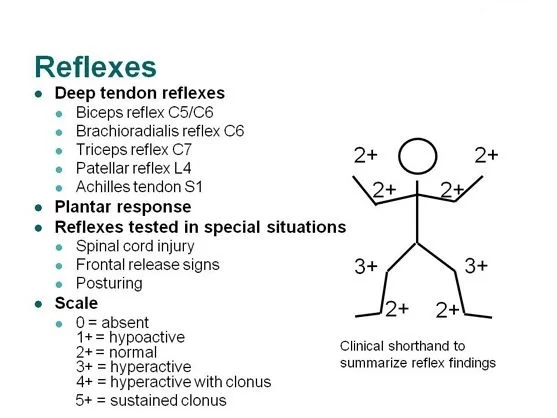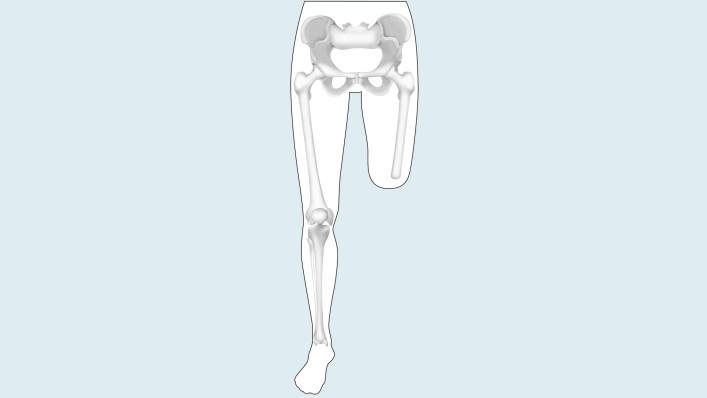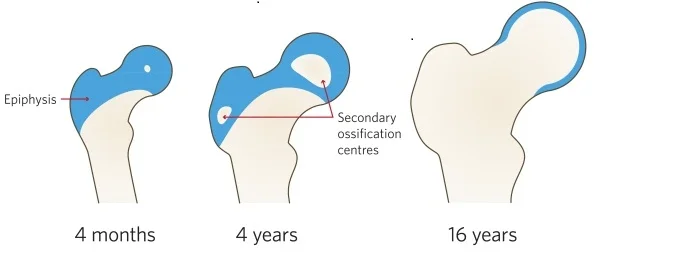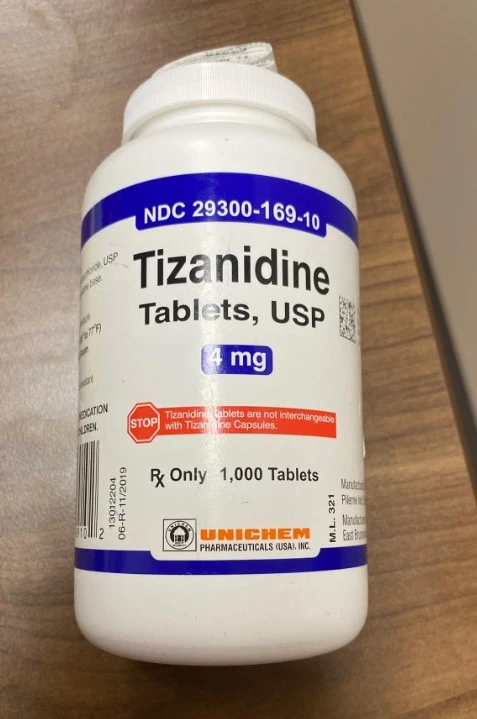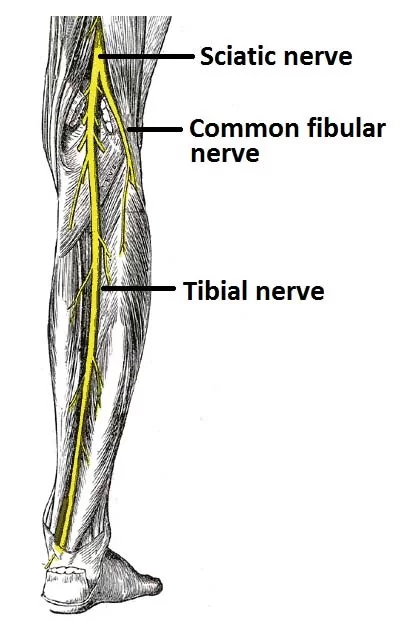Buccinator muscle
Introduction:
The Buccinator muscle is a bilateral square-shaped muscle constituting the mobile as well as the adaptable cheek area.
This muscle is sometimes referred to as an accessory muscle of mastication due to its role in compressing the cheeks inwards against molars, thus, aiding in chewing and swallowing.
Due to its function of puffing out cheeks, it is also called “trumpeter muscle.” It lies deep in the skin.
Superficial to this muscle lies the anterior border of the masseter muscle and more superficial facial muscles.
One of the first muscles in an infant to get activated during sucking is the buccinator.
Buccinator muscle Anatomy:
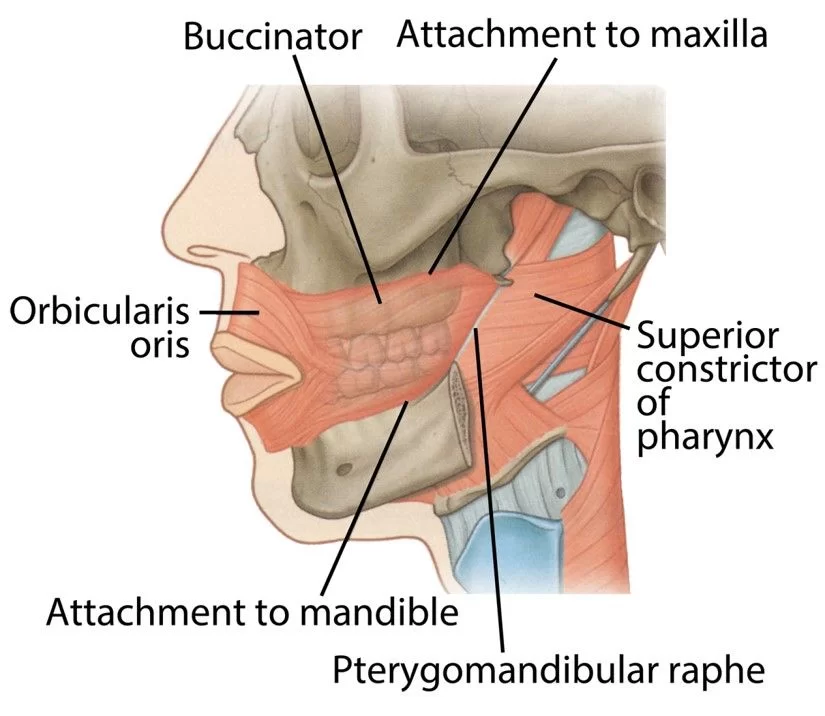
The buccinator is one of the muscles of the cheeks and lips. On each side, it has a complex origin from:
Maxilla: along the alveolar process superior to alveolar margin horizontally between the anterior border of the first to the posterior border of the third molars before turning inferiorly to extend to the maxillary tubercle.
Mandible: along the oblique line of the mandible between the first and third molars
pterygomaxillary ligament pterygomandibular raphe posteriorly.
Its muscle fibres pass anteriorly to converge on the orbicularis oris muscle in the modiolus of the mouth.
Fibres originating from the ligament and raphe decussate at the modiolus whereas those originating from bone pass directly into the nearest lip without crossing.
Superficial to buccinator is the buccal fat pad. Deep in the muscle is the mucous membrane of the cheek. It is traversed by the parotid duct.
Its arterial supply is from the buccal artery.
It is not a primary muscle of mastication, it does not move the jaw, and this is reflected in its motor innervation from the facial nerve.
proprioceptive fibres are derived from the buccal branch of the mandibular part of the trigeminal nerve (CN V).
Relations:
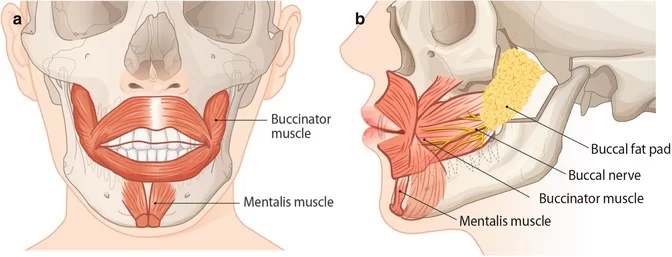
- The buccinator is the main component of the cheeks along with a considerable amount of subcutaneous fat.
- The buccal fat pad (of Bichat) covers the outer surface of the deep part of buccinator, separating it from the ramus of the mandible, masseter, and temporalis muscles.
- Buccinator lies in the same plane and anteriorly to the superior pharyngeal constrictor, being separated from it by the pterygomandibular raphe.
- Both muscles are covered by the buccopharyngeal fascia. The posterior border of the buccinator is pierced by the tensor veli palatini near its attachment point to the pterygomandibular raphe.
- Superior and inferior parts of the muscle lie deep to the zygomaticus major, risorius, levator, and depressor anguli oris muscles.
- This surface is also crossed by the facial artery and vein and the branches of the facial (CN VII) and buccal nerves.
- The duct of the parotid gland courses over this surface as well, and pierces the buccinator at the level of the third upper molar tooth.
- It then courses shortly over its deep surface and opens into the oral cavity’s second upper molar tooth.
- The deep surface of the muscle is related to the structures of the oral cavity, buccal glands, and mucous membranes of the mouth.
Innervation:
- The buccinator is innervated by the buccal branches of the facial nerve (CN VII).
Blood Supply and Lymphatics:
- The main blood supply to the buccinator comes from three arteries which form extensive anastomotic vascular plexus on the muscle’s lateral surface and within its fibers.
- The posterior part of the muscle is supplied by the buccal artery, which is a branch of the internal maxillary artery.
- The artery runs in an anteroinferior direction under the external pterygoid muscle to reach the posterior part of the muscle.
- The facial artery, via its numerous branches, supplies the posterior, inferior, and anterior part of the muscle.
- The posterior buccal branch, which is the largest branch of the facial artery supplies the posterior half of the muscle. Inferior buccal branches of the facial artery supply the inferior half of the muscle.
- It then runs anterosuperiorly to give off anterior buccal branches which supply the anterior half of the muscle.
- Two small branches form the posterosuperior alveolar artery, which is a branch of internal maxillary artery that enters the buccinator muscle posterosuperiorly and supplies the surrounding area.
- Venous drainage of the muscle occurs through the pterygoid plexus and internal maxillary vein.
Functions of Buccinator muscle :
- Buccinator maintains the tightness of the cheeks and presses them against the teeth during chewing.
- It also assists the tongue to keep the bolus of food central in the oral cavity.
- This function is important to prevent it from escaping into the oral vestibule, as well as pushing any food that entered the vestibule back into the oral cavity.
- Buccinator also prevents cheeks from inverting in between the occlusal surfaces of the teeth and being bitten.
- The buccinator muscle has another interesting function, and that is expelling the air from the inflated vestibule while playing a wind instrument such as the trumpet.
- This is why the buccinator muscle is also called the “trumpet muscle”.
Clinical Importance of Buccinator Muscle:
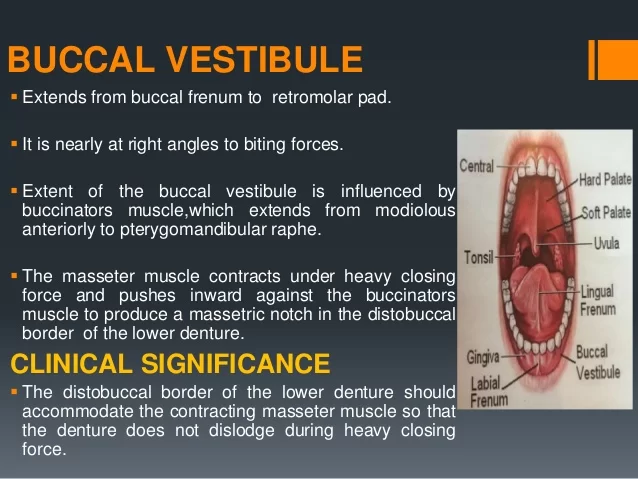
- Hyperactivity of the buccinators muscle can cause excessive pressure on the underlying hard tissues resulting in narrow arches and malocclusion.
- Damage to the facial nerve can lead to paralysis of the buccinator muscles, which can lead to difficult mastication as the non-functioning of this muscle can cause repeated laceration of the cheek mucosa.
- Abnormal attachment of this muscle may interfere with proper prosthodontic management and maintaining oral hygiene.
- It will also restrict the cheek and lip movement leading to difficulty in mastication and phonation.
- The muscle has been shown to have an indirect involvement during parafunctional movements.

